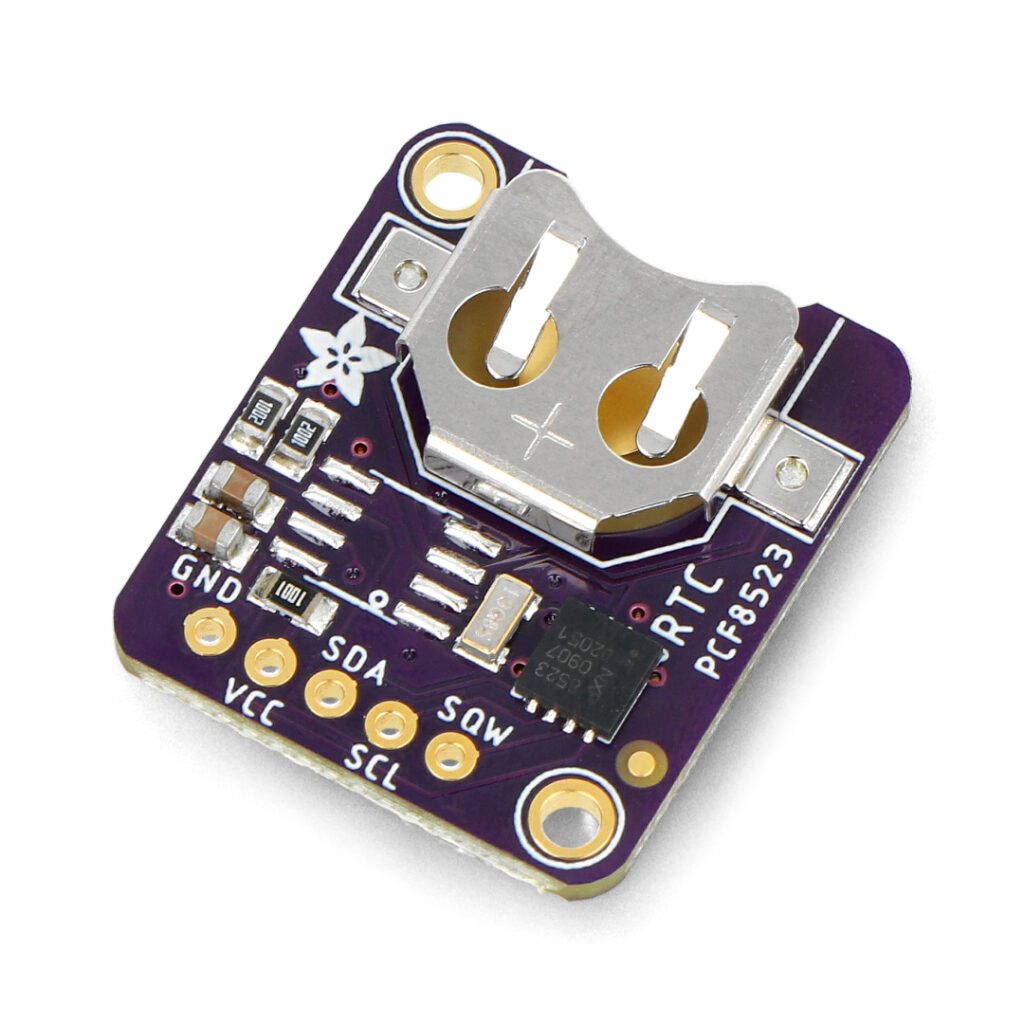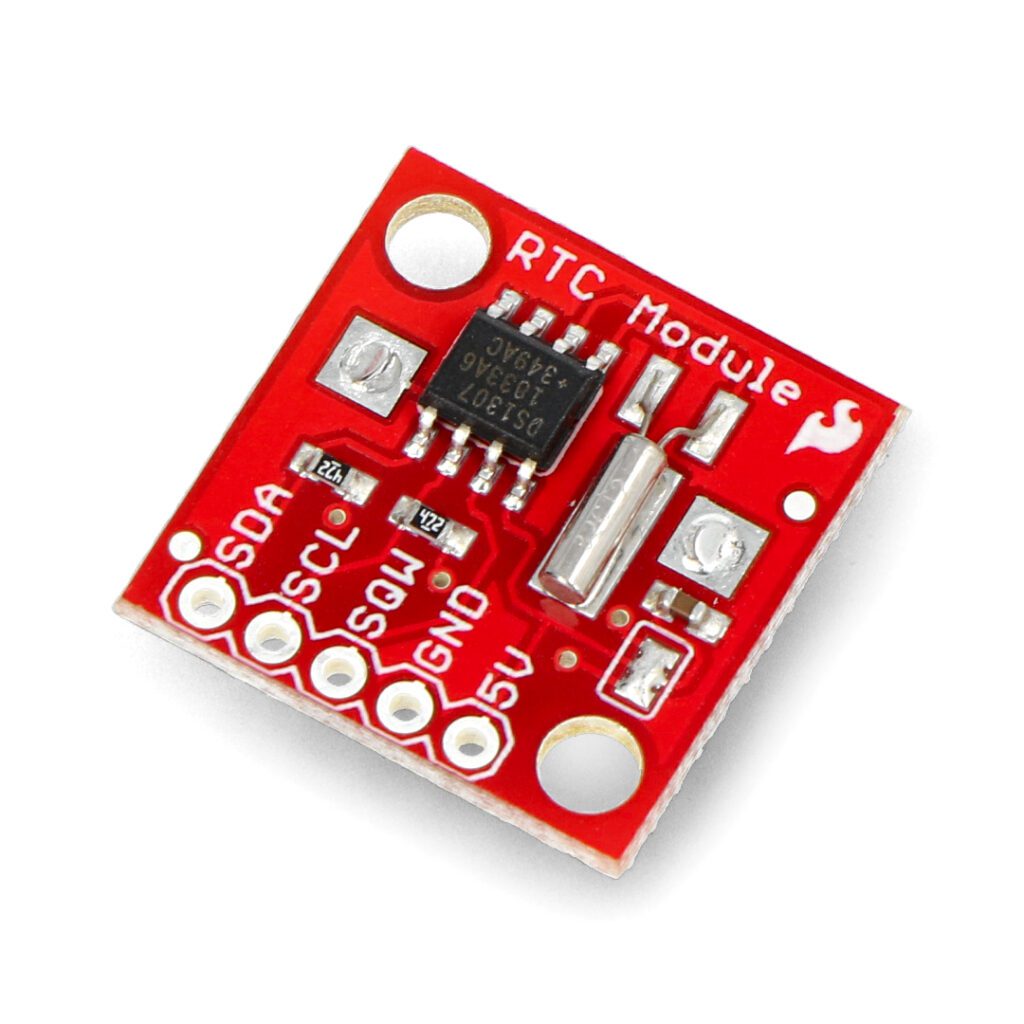Table of Contents:
Time has always been one of the most important parameters in our lives.
Whether we are conducting precise scientific research or planning our daily chores, we need a way to measure it.
One of them is the Real Time Clock system, or RTC, which plays a key role in many microcontroller-related projects such as Arduino.
RTC makes it possible to accurately track the current time and date.
Check out what exactly this solution is, how RTC modules work, and in what areas they can be used together with Arduino.
What is the RTC?
RTC, or Real Time Clock, is an electronic circuit whose main function is to accurately and continuously keep track of the current time.
In the context of the Arduino platform, the RTC becomes an indispensable component, enabling accurate time monitoring even when the microcontroller is turned off.
This means that the RTC allows you to maintain accurate information about the hour, minute, second, and often the day of the month and year, regardless of the device’s power supply.
As a result, Arduino-based programs and projects can operate based on real time, which finds application in various areas of our lives.
How does the Arduino RTC work?
RTC modules for Arduino typically use a quartz oscillator to generate a precise clock signal.
The chip also contains battery-powered RAM, which allows it to store data, such as time and date settings, even when the microcontroller’s power is off.
In the case of the DS3231 chip, communication with the microcontroller is via the I2C bus, making integration with the Arduino platform relatively simple.
The microcontroller communicates with the RTC chip to set the time, read the current time and perform other time-keeping functions.
Popular RTC modules for Arduino
There are many popular RTC modules in the Arduino environment that are easy to use and offer highly accurate timing.
A few of the most popular are:
- DS1307 – is one of the frequently used RTC modules.
It has a built-in real-time clock chip and an I2C communication interface, making it easy to integrate with an Arduino microcontroller. - DS3231 – This module offers higher precision than the DS1307, allowing for more accurate time monitoring.
- PCF8523 – is another popular RTC module that offers an I2C interface and alarm programming capability, making it ideal for applications requiring both time tracking and event handling at specific times.
Connecting the RTC to the Arduino
Integrating an Arduino with an RTC module is relatively simple and usually requires connecting only two or three pins (depending on the communication interface) and using the appropriate library.
For example, for the DS1307 module, you can use the RTClib library, which provides easy access to time-related functions.
What benefits does the Arduino provide with RTC?
When looking at the most important advantages of integrating an Arduino minicomputer and RTC, it is certainly important to emphasize that the real-time clock offers greater precision than the built-in clock of a popular board, which is essential for many applications, such as recording the duration of events, managing schedules, or controlling the operation of a specific device.
What’s more, with built-in battery-powered memory, RTC modules can keep time even if external power is lost.
This ensures reliability when using systems that should function properly in the long term.
Using an Arduino with RTC also allows for efficient power management by scheduling periods of microcontroller activity and sleep based on the current time.
Where is the Arduino with RTC being used?
Arduino RTC is used in many projects where precise time tracking is crucial.
Below are some examples of applications:
1. clocks and time displays
The RTC module in Arduino allows the creation of reliable timepieces in various forms, from traditional wall clocks to innovative designs such as LED clocks and touch clocks.
2. home automation
In home automation projects, where control of lighting, heating or blinds is done according to a time schedule, the Arduino RTC happens to be an indispensable chip.
3. data loggers
Arduino RTC is used in data loggers that need to accurately track the time and date of events, such as temperature, humidity or atmospheric pressure measurements.
4. monitoring systems
In monitoring projects, for example, in the context of environmental or health monitoring, the Arduino RTC allows you to mark the exact time of recorded data.
Arduino with RTC module - summary
Real-time clocks in many cases are a key component of Arduino projects.
RTCs enabling precise time tracking and task management based on the actual date and time.
Thanks to their reliability, accuracy and independence from external power, RTC modules are indispensable in many applications.
Their integration into a minicomputer is relatively simple, opening the door to creating a range of interesting projects.
How useful was this post?
Click on a star to rate it!
Average rating 0 / 5. Vote count: 0
No votes so far! Be the first to rate this post.





















